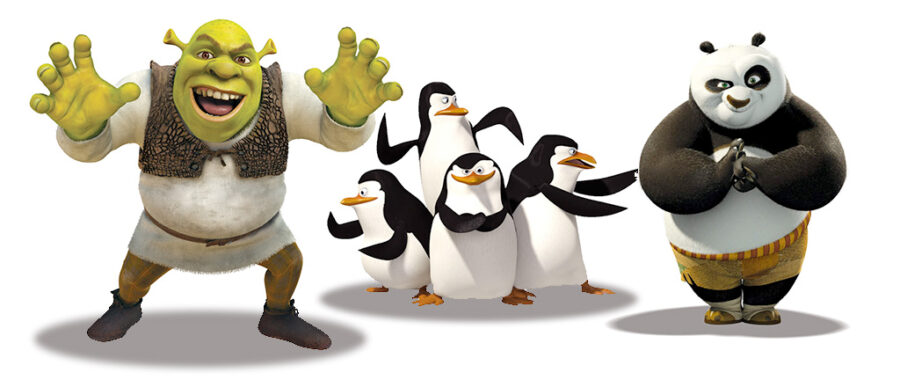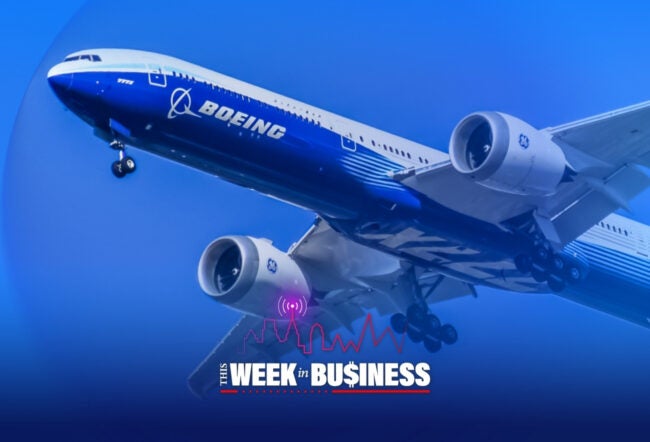Comcast’s acquisition of DreamWorks Animation (DWA) for about $3.8 billion strengthens the broadcasting and cable TV giant’s arsenal as it competes with the Walt Disney Company on several fronts. The acquisition, which is subject to regulatory approvals, enables Comcast to provide stronger content and related merchandise to the coveted markets of kids, teens and millennials and better execute its China strategy, among other gains. The deal is also consistent with the broader changes underway in the industry, including content delivery on multiple screens.
Philadelphia-based Comcast’s acquisition of DreamWorks Animation will be through its NBCUniversal division, which the cable giant bought in two stages in 2011 and 2013 from General Electric for a total of about $30 billion. “Now, with DreamWorks, Comcast would get a more balanced portfolio in terms of distribution and content,” said Marc Tayer, president of MediaTech Insights, a consulting firm, and author of the book Televisionaries, which documents the history of digital TV. “[The DreamWorks acquisition] allows Comcast to go head-to-head … against Disney, [which] will become even more of a direct competitor.”
Tayer recently discussed the takeaways from the deal for Comcast and its competitors on the Knowledge at Wharton show on Wharton Business Radio on SiriusXM channel 111. (Listen to the podcast at the top of this page.)
Catering to Millennials, Teens and Kids
“The deal reflects the integration between media production and distribution that has been going on for the past few years,” said Kartik Hosanagar, Wharton professor of operations, information and decisions. Companies like Netflix and Amazon have started producing and distributing their own content, while HBO bypassed cable companies to offer its slate of content directly to consumers through streaming. The NBCUniversal acquisition gave Comcast ownership of a number of content properties.
“[The DreamWorks acquisition] allows Comcast to go head-to-head much better against Disney, [which] will become even more of a direct competitor.” –Marc Tayer
“Owning more unique content gives distribution companies like Comcast greater control over their destinies at a time when many channels are exploring going direct to consumers,” said Hosanagar.
The deal makes sense, but its biggest benefits will be seen in the long run, according to Wharton marketing professor Jehoshua Eliashberg. “As Comcast is seeking growth opportunities, it realizes that consumers are engaged in cord-cutting,” or abandoning their cable subscriptions in favor of streaming TV and movies via the Internet.
Eliashberg said increasing competition in the cable TV industry is also a factor driving the DreamWorks acquisition. He noted that Hulu, for instance, is planning a cable-style subscription service that would stream entire broadcast and cable TV channels online. Hulu is co-owned by Disney and 21st Century Fox. “Comcast/NBCUniversal is not performing well in digital content and international TV,” he noted. “However, Universal’s theme parks business is doing well, and it could benefit from synergy with DreamWorks Animation.”
According to Tayer, the deal enables Comcast to be a stronger player in the increasingly coveted millennial and teen markets. “The multi-screen world is getting stronger every day with people, especially millennials, watching content not just on their living room TVs but on smartphones, tablets, PCs and Macs,” he said. With this deal, consumers may not see “much of a direct change but will see a continuation of the major trends, [especially in their] multi-screen world.”
Tayer noted that consumers, especially kids, are well acquainted with some of the characters created by DreamWorks Animation, such as Shrek, the Madagascar movies and the Kung Fu Panda series. DreamWorks Animation, led by Jeffrey Katzenberg, has several animation films in production that are scheduled to be released over the next couple of years, he said. “That trend will continue, and maybe accelerate, and will all be part of the Comcast family.”
In targeting millennials and teens, DreamWorks serves as a complement to Universal’s animation unit, Illumination Entertainment, said Eliashberg. Illumination has produced some successful movies such as Despicable Me, “albeit not at the same magnitude as Disney,” he noted.
Fast Boat to China
“The deal is synergistic with Comcast’s emerging China strategy,” said Tayer. He noted that NBCUniversal is planning to build a $3 billion theme park in Beijing, while rival Disney will open its long-anticipated Shanghai resort this summer. DreamWorks Animation already has a presence in China with Oriental DreamWorks, a joint venture with Chinese investors that produces Chinese-themed animation content and action films. Tayer saw huge opportunities in that market for theme parks, toys and related merchandise.
“Other than the theme park arena, where China seems to be a big part of the play, some experts believe that China will become in the future a dominant content creator with global appeal that may even exceed that of Hollywood,” said Eliashberg. “Under such a scenario, co-productions between Oriental DreamWorks and local Chinese production firms may provide another significant benefit to Comcast/NBCU.”
“DreamWorks gains a stronger and a longer-term, secure home to develop content in,” added Tayer. DreamWorks Animation was originally part of DreamWorks SKG, which was founded by Steven Spielberg, Katzenberg and David Geffen — whom Tayer described as “three of the towering icons of Hollywood.” DreamWorks Animation was spun off as a separate public company in 2004.
“As Comcast is seeking growth opportunities, it realizes that consumers are engaged in cord-cutting.” –Jehoshua Eliashberg
DreamWorks Animation has had a spotty record with its finances, Tayer noted. The company ended 2015 in a strong position, posting revenues of $319 million – the best in eight years – in the final quarter and $916 million for the year, beating analysts’ expectations. But the company had also scaled back its slate of films, laid off employees and sold (and leased back) its Glendale, Calif., headquarters. “While it is certainly a force to be reckoned with, it wasn’t as successful as people thought it might be, 20 years ago when Spielberg, Katzenberg and Geffen started the company [in 1994],” Tayer said. In any event, competitors like Lions Gate Entertainment would now be on alert, he added. “[Competitors] will be much more concerned that DreamWorks comes with a much more powerful parent.”
The deal will of course bring organizational changes for DreamWorks Animation as it will become part of a much larger enterprise. CEO Katzenberg will no longer have the lead active role in running the company, but serve as a consultant to NBCUniversal and become chairman of a new entity called DreamWorks New Media. DreamWorks Animation will report to Chris Meledandri, founder of Illumination Entertainment, which has an exclusive financing and distribution partnership with NBCUniversal.
A Patchy M&A Record
Growth through acquisitions has not been an easy strategy for Comcast, which is already the world’s largest broadcasting and cable TV company. Tayer said he was not surprised by Comcast’s move to buy DreamWorks Animation, especially since the company “got shut out of buying Time Warner Cable last year.” Comcast terminated that deal against the backdrop of opposition from consumers and apprehensions that regulators would block the deal.
“The regulators thought that would make Comcast too powerful on the distribution side, but we now know that [the company] is not only strong in distribution, but through its acquisition of NBCUniversal, it is also a content powerhouse,” said Tayer. “The acquisition of DreamWorks adds to that [content] side of Comcast.”
Tayer recalled that Comcast had attempted to buy Disney about a dozen years ago, but backed down after being rebuffed by Disney’s board of directors. At the time, Comcast was almost purely a content distribution company, although it did own some content assets like a golf channel, the E! Entertainment network and some regional sports channels, he noted.
The Regulatory Road Ahead
Tayer did not expect regulators to block the deal. However, he predicted that they will scrutinize it and likely impose some conditions related to some of the assets. NBCUniversal officials have said they expect the deal to be finalized later this year. “[Regulators have] no reason to block Comcast in this deal,” said Tayer. “It makes logical sense if you think of the two sides of Comcast – one being content and the other being distribution.”
Comcast is also an indirect beneficiary of the U.S. Justice Department last week approving Charter Communications’ $78 billion acquisition of Time Warner Cable and its related $10.4 billion acquisition of Bright House Networks from Advance/Newhouse Partnership. After the merger, Charter Communications would become the second largest cable operator in the U.S. The regulatory approval comes with strings attached. The merged company cannot enter into or enforce agreements that could make it more difficult for online video distributors to obtain video content from programmers, the Justice Department said in a press note.
“Comcast has shown it is willing to grow by making smart and aggressive acquisitions, and this is yet another one of those.” –Kartik Hosanagar
Factoring Pre-existing Relationships
Tayer said he expected regulators to look closely at some existing shareholdings and relationships on both sides that might raise competition issues. One involves AwesomenessTV, an Internet-based video company of which DreamWorks Animation is a majority owner. The company also runs DreamWorksTV, another Internet channel. Both are YouTube channels targeted at teenagers, preteens and families.
Verizon, a Comcast competitor, owns about a quarter of AwesomenessTV. Verizon’s plan with this investment was to provide content support for its “go90” video hosting service that it launched in September 2015, Tayer said. Verizon’s plan was to target the millennial and post-millennial generation, as well as gamers, to watch their favorite shows on their cell phones, he explained.
Netflix licenses content from DreamWorks Animation that is also aimed at kids and millennials. Regulators will look at these arrangements, and may ask Comcast to avoid tinkering with the deal DreamWorks has with Netflix, according to Tayer.
“Comcast surely expects to get a lot from this deal in the ensuing decades,” said Tayer, referring to the purchase price of $41 a share for DreamWorks Animation. That price represented a premium of about 50% over the traded price earlier last week, before news of the acquisition became public.
The DreamWorks acquisition also offers Comcast a new and diverse revenue source, said Hosanagar. “Comcast has shown it is willing to grow by making smart and aggressive acquisitions and this is yet another one of those,” he added.



